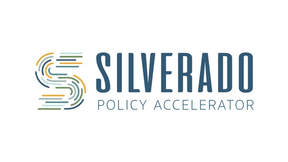Three Key Areas for Policy Action
Cybersecurity, Trade and Industrial Security, and Eco²Sec
Silverado’s three areas of focus converge on policy challenges that are ripe for new action and approaches.
At first glance, Silverado’s three areas of focus might not seem to have much in common. What does cybersecurity have to do with the environment? How does international trade policy affect the safety of American networks? And what on earth is “Eco²Sec”?
But trust us: we didn’t just pull three policy areas out of a hat and build a mission around them. At Silverado, we think cybersecurity, trade and industrial security, and Eco²Sec — our term for the nexus of ecological risk and economic opportunity — represent three interconnected policy areas that are ripe for bold policy action and novel strategic approaches. Addressing key challenges at the intersection of these three areas will be the central strategic challenge facing the United States and its allies in the 21st century. Not convinced? Let us explain.
At a foundational level, cybersecurity, trade and industrial security, and Eco²Sec each present the United States with a unique set of challenges and imperatives. In the cyber arena, the U.S. is faced with a pressing need to modernize its cyber strategy to enhance deterrence, defend against attacks by nation-state and private actors, and protect American intellectual property and national security. On the trade front, the U.S. needs to shape to develop a comprehensive trade and industrial strategy that supports American workers, secures America’s supply chains, and advances equitable trade practices both at home and abroad. Finally, to meet the 21st-century climate imperative, we need to explore the nexus of economic and ecological risk and opportunity to hasten the transition to a more sustainable economy and drive economic growth.
While each of these arenas stands on its own, they are also knitted together by their importance in a new era of heightened economic, technological, and strategic competition between the world’s two great powers — the United States and its allies on the one hand, and China and its clients on the other. As we explained in our first blog post, China’s quest for global supremacy has sparked a high-stakes race for global leadership that touches every aspect of public policy. Silverado’s three areas of focus figure especially prominently in this new era of competition, as the U.S., China, and their allies race to develop the newest technologies, build the smartest economies, and address the imminent threats of climate change without hampering economic growth.
But the relationship between Silverado’s three areas of focus runs deeper than their shared prominence in this new area of great power competition. In a critical sense, solving the challenges that the U.S. and its allies face in any one of these areas often depends on addressing critical challenges in the others. The development of America’s Smart Grid, for example, could generate new opportunities for American workers and advance the U.S.’s sustainable energy goals while also protecting the power grid from dangerous cyberattacks by foreign adversaries and private cyber criminals. Growing America’s domestic manufacturing base for semiconductors — a crucial step toward reducing our reliance on global supply chains and ensuring competitive conditions at home — will require challenging unfair foreign trade practices and confronting the ecological risks of increased domestic production. Finally, as a number of recent high-profile cyberattacks have made clear, the safety of American cyberspace is intimately connected to the safety of a growing number of entities and organizations, from small businesses to government agencies.
The salience of these issues will only continue to grow as America strives to maintain its competitiveness on the global stage. At Silverado, we think that recognizing their interconnectedness is an important first step. The next — and more important — step is to address them.
Pillar
General
Related News and Events

Silverado’s Semiconductor and Semiconductor Manufacturing Equipment Portfolio
Silverado's work to date on semiconductor policy issues, including reports, data dashboards on industry conditions, testimony, and media publications.
Read Publication
Silverado Policy Accelerator Announces Additions to its Strategic Council
Silverado Policy Accelerator is thrilled to welcome 17 new members to our expanded Strategic Council.
Read Publication
Silverado Comments on Reinstating Arsenic on the 2025 Critical Minerals List
Silverado submitted comments to the Department of the Interior calling for arsenic to be reinstated on the U.S. Geological Survey’s 2025 Critical Minerals List.
Read Publication